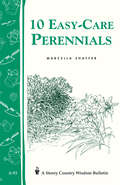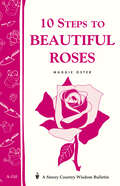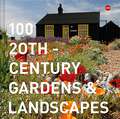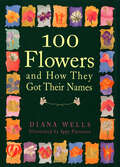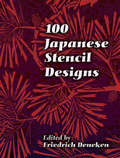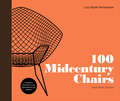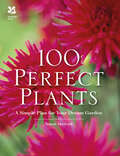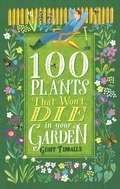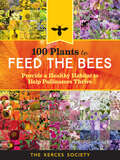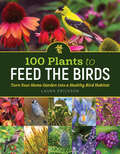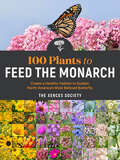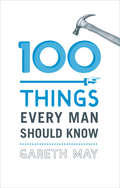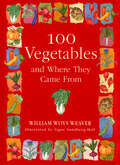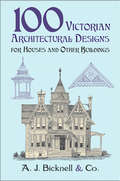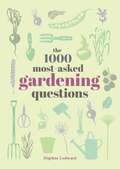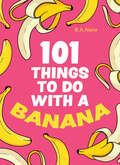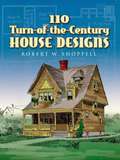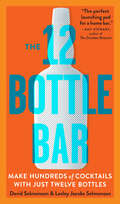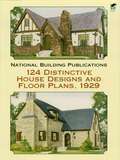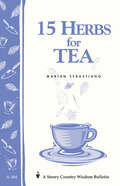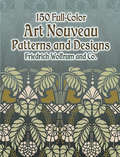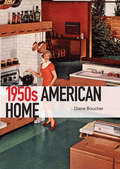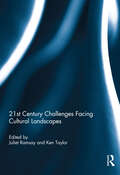- Table View
- List View
10 Easy-Care Perennials
by Marcella ShafferIf you love to garden but don't have much time to spend weeding, watering, and fussing over your plants, perennials are the perfect flowers for you. Most perennials self-propagate and multiply on their own, increasing in beauty and size each year. They are also less expensive and time-consuming than annuals over the long term, because you don't have to buy new plants each year. But choosing the best plants from today's selection of literally thousands of perennials is enough to stump any flower enthusiast, let alone a beginning gardener. This booklet will introduce you to 10 beautiful perennials that are undemanding, wonderfully versatile, and adaptable to a variety of growing conditions. They're not particularly fussy about soil conditions, and they can tolerate both drought and overwatering, as long as they have adequate drainage. These wonders of the perennial world grow quickly, require little maintenance, and reward you with a kaleidoscope of color and gorgeous foliage year after year.
10 Steps to Beautiful Roses: Storey Country Wisdom Bulletin A-110 (Storey Country Wisdom Bulletin)
by Maggie OsterGrow beautiful roses in 10 simple steps! Whether you&’re a novice learning the basics or an experience gardener looking for tips to improve your blooms, Maggie Oster&’s expert advice offers all the know-how you&’ll need. In 10 easy steps, you'll have beautiful, fragrant roses with minimum fuss and maximum yield.
100 20th-Century Gardens and Landscapes
by Twentieth Century SocietyA showcase of Britain's most extraordinary gardens and landscapes from the twentieth century to present day. 100 20th-Century Gardens and Landscapes highlights the evolution of gardens and landscapes over the past century, tracing how these distinctive creations complemented buildings of their period. Entries in this book are grouped in chronological periods, documenting changing styles and techniques in a visual timeline. The examples chosen take the story from the Arts and Crafts garden and the garden city, through the landscapes created for mid-century housing and the new towns, to the low-maintenance gardens of the 1980s and contemporary trends for community and wildlife gardens. Designed landscapes were often integral to the conception of twentieth-century developments; the inclusion of a handful of particularly successful landscapes for memorial gardens, offices, industry, transport and parks demonstrate a changing attitude to public green space during the century and its increasing importance as private gardens have become ever smaller. Designers and architects such as Piet Oudolf, Charles Jencks, Frederick Gibberd, Geoffrey Jellicoe, Vita Sackville-West and Gertrude Jekyll are all featured, alongside more detailed essays on the history of gardens, planting styles, the importance of modern landscapes, and the career of Geoffrey Jellicoe. The text is written by architectural, landscape and garden historians including Elain Harwood, Barbara Simms and Alan Powers. Beautifully illustrated throughout with photography, illustrations and garden plans, this book is ideal for gardeners and landscape lovers alike.
100 Flowers and How They Got Their Names
by Diana WellsIllustrations by Ippy Patterson. From Baby Blue Eyes to Silver Bells, from Abelia to Zinnia, every flower tells a story. Gardening writer Diana Wells knows them all. Here she presents one hundred well-known garden favorites and the not-so-well-known stories behind their names. Not for gardeners only, this is a book for anyone interested not just in the blossoms, but in the roots, too.
100 Japanese Stencil Designs (Dover Pictorial Archive)
by Friedrich DenekenThe natural Japanese affinity for decorative art is apparent in this striking collection of exquisite stencil designs. A centuries-old tradition of capturing nature in striking floral and wildlife motifs is reflected in the graceful shapes and lovely lines of more than 100 illustrations. Lush blossoms, bamboo branches, butterflies, birds on the wing, and rustic country homes, among other subjects long associated with Japanese art, are boldly printed in black and white.Ready for use as patterns for wallpaper, textiles, graphics, and needlework, these delicate royalty-free images are ideal for a host of modern decorative and graphic needs.
100 Midcentury Chairs
by Lucy Ryder RichardsonA stylish and informative guide to the best of Midcentury Modern chair design. These are the top 100 most interesting, most controversial, or simply most beautiful chairs from the period spanning 1930–1970, according to expert curator and chair addict Lucy Ryder Richardson.
100 Perfect Plants
by Simon AkeroydBring the beauty of National Trust gardens to your own little patch.
100 Plants That Won't Die in Your Garden
by Geoff TibballsStocking a garden with plants can be an expensive business, so there are few things more frustrating than when the prized specimen for which you have paid a king's ransom either online or at a garden centre shrivels up and dies within a year or so of purchase. If you can prove that the plant was half-dead when it arrived, you may able to obtain a refund from some online retailers, but for the most part you have to put it down to experience and make a firm mental note not to buy fussy plants in future.The problem is that many websites and catalogues claim that everything they stock is easy to grow. Herbaceous perennials are a particular minefield. Too often you are told that a certain plant 'will come back year after year' without fail when in reality it is either so tender that the only chance of it surviving an average British winter is in a greenhouse or it is a short-lived perennial that is unlikely to flourish beyond two years anyway - and even then only if the local slugs and snails are on a diet. This book cuts through the horticultural sales pitches by listing 100 plants which, for little care beyond the essential watering at planting time, can reliably be expected to thrive in just about any garden. These plants are all but indestructible - pests give them a wide berth, they will prosper in any reasonable garden soil and will withstand anything that the UK climate throws at them. Divided into sections for shrubs, conifers, climbers, perennials, grasses, annuals, alpines and bulbs and with each entry having a Value For Money (VFM) rating out of 10, this easy-to-use guide will prove invaluable not only for the new gardener but also for old hands who are fed up with wasting time and money on plants that all too rapidly lose the will to live. With these suggestions, you can be assured of year-round colour and interest in your garden for the minimum of effort.
100 Plants to Feed the Bees: Provide a Healthy Habitat to Help Pollinators Thrive
by The Xerces SocietyIn an at-a-glance, photo-driven format, 100 Plants to Feed the Bees presents 100 nectar- and pollen-rich plants that home gardeners can cultivate to create a more bee-friendly world.
100 Plants to Feed the Birds: Turn Your Home Garden into a Healthy Bird Habitat
by Laura EricksonPlants are one of the healthiest and most helpful ways to attract and support a wide variety of birds. In this colorful easy-reference guide, birding expert Laura Erickson details the 100 best native plants for providing food and habitat to backyard and migrating birds across North America.
100 Plants to Feed the Monarch: Create a Healthy Habitat to Sustain North America's Most Beloved Butterfly
by The Xerces SocietyThis practical, inspiring guide shows how individuals can help support the endangered North American monarch butterfly, with information on creating monarch-friendly landscapes using plants that feed and sustain the butterfly through the different stages of its life.
100 Things Every Man Should Know
by Gareth MayThis manual for the modern man is a brilliantly witty, honest and down-to-earth guide, which tells you all the things your best friend can't. Drawing on centuries of male wisdom, it covers every conceivable situation, including:- How to hit a bullseye in darts- Know your beef- What to look for in a second hand car- Essential DIY tips- How to organise a stag do- How to give yourself a number one cutThe perfect gift for any man who has ever struggled to tie a perfect tie or fix a U-bend.
100 Vegetables and Where They Came From
by William Woys WeaverA perfect leek from France. Flavorful zucchini from Italy. An infamous potato from Ireland, and a humble lentil from Ethiopia. 100 Vegetables offers a veritable cornucopia of vegetables and stories from around the world--from Argentina to Zimbabwe, from Australia to the United States. William Woys Weaver--veggie connoisseur, gardener, and historian--guides us through a range of peppers, potatoes, peas, gourds, onions, tomatoes, greens, and a whole lot more. Not every carrot is the same. All beans aren't equal. Take the Petaluma Gold Rush bean, a rugged legume, grown for over 150 years and brought to California by an American whaler from Peru. Or the violet carrot, which the Greeks brought back from India following the conquests of Alexander the Great. Mixing history, culinary suggestions, practical information, and personal anecdotes, Weaver introduces us to unusual heirloom vegetables as well as to common favorites. He provides answers to general questions, such as the difference between a yam and a sweet potato, and presents lively portraits of one hundred vegetable varieties, which he's grown and harvested in his own kitchen garden. Organized alphabetically by common name, 100 Vegetables includes beautifully detailed drawings throughout and a helpful appendix of seed resources.
100 Victorian Architectural Designs for Houses and Other Buildings (Dover Architecture)
by A. J. Bicknell Co.Originally published in 1878, this now-rare collection of designs supplies views of a remarkable variety of modestly priced structures: houses, villas, cottages, many others. Handsome drawings of perspective views and elevations, some of which include floor plans, plus suggestions for interior design. 98 black-and-white illustrations.
The 1000 Most-Asked Gardening Questions
by Daphne LedwardIn the multifaceted world of gardening, the same questions arise time and time again. Organised season-by-season, this book promises to answer the 1000 most-asked questions that can frustrate all gardeners alike.Drawing on her years of experience in gardening, former panellist and researcher for the BBC's Gardeners Question Time Daphne Ledward has answered them all. From knowing how to identify your soil type, the finer points of pruning and propagation, and seeds versus seedlings; to the thorny problems of dealing with chronic pests and diseases, and finding plants for difficult places, this book is the answer to all of the most frequently asked gardening questions.Get the most out of your garden, big or small, and discover answers to common issues such as:- what type of soil is best for your garden- how to select the best plants, vegetables and herbs according to your space- how to get your plants through a difficult winter- how to best care for your plants, be it bulbs, roses, vegetables or even your lawn- how to make your own compost
101 DIY Fixes!: Your Guide To Quick Jobs, Repairs And Renovations
by Collins & Brown101 step-by-step fixes with over 200 illustrations Projects from quick jobs to weekend makeovers The accessible and indispensable handy guide for every home
101 Things to Do With a Banana
by B.A. NanaA bunch of truly ap-peeling things to do with this fruit basket staple.
110 Turn-of-the-Century House Designs
by R. W. ShoppellWith its wealth of representative styles and its emphasis on craftsmanship and exterior design, the late-Victorian era ranks among the halcyon days in American house building. This survey of the era's traditional designs--reproduced from a rare edition--offers a complete and authentic guide to faithful restorations or re-creations.A New York City-based firm prepared and published this catalog in 1897, selecting the very best models from more than 12,000 houses built from their plans. Designed with style, utility, and low cost of construction uppermost in mind, it features hundreds of illustrations, including perspective drawings and floor plans. Details of interior and exterior materials and potential modifications include remarks on the particular amenities of each house, plus estimates of building costs. Antique collectors, home hobbyists, and fans of traditional design will find this volume a valuable reference and an endless source of inspiration.
The 12 Bottle Bar: Make Hundreds of Cocktails with Just Twelve Bottles
by David Solmonson Lesley Jacobs SolmonsonIt&’s a system, a tool kit, a recipe book. Beginning with one irresistible idea--a complete home bar of just 12 key bottles--here&’s how to make more than 200 classic and unique mixed drinks, including sours, slings, toddies, and highballs, plus the perfect Martini, the perfect Manhattan, and the perfect Mint Julep. It&’s a surprising guide--tequila didn&’t make the cut, and neither did bourbon, but genever did. And it&’s a literate guide--describing with great liveliness everything from the importance of vermouth and bitters (the &“salt and pepper&” of mixology) to the story of a punch bowl so big it was stirred by a boy in a rowboat.
124 Distinctive House Designs and Floor Plans, 1929
by National Building PublicationsAn annual publication intended as a reference work for contractors, suppliers, architects, and homeowners, the 1929 Home Builders Catalog offered a beautifully illustrated look at a variety of homes. Painstakingly reproduced from a rare edition, this volume offers old-house restorers, preservationists, and lovers of 1920s architecture an authentic view of American homes of the era.
15 Herbs for Tea: Storey's Country Wisdom Bulletin A-184 (Storey Country Wisdom Bulletin)
by Marian SebastianoBrew a Fragrant “Cuppa” Straight From Your Own Garden!Growing your own herbal teas can be just as therapeutic as drinking them. The tea garden is a sensory delight, producing colors, aromas, and flavors to enjoy throughout the seasons. The plants are easy to grow and you don’t need a large area – even a few small containers will do. By drying the tea herbs and then blending and packaging them in your own unique way, you can share the bounty of your garden with appreciative friends and family.In 15 Herbs for Tea you’ll find everything you need to know about growing and using tea herbs, from information on planting and maintaining your herb bed to how to harvest, dry, and blend the herbs. In case you don’t have the time and energy to grow your own tea herbs, you’ll find a list of sources for buying them in bulk. Best of all, you’ll learn how to brew a delicious cup of tea!
150 Full-Color Art Nouveau Patterns and Designs (Dover Pictorial Archive)
by Friedrich Wolfrum Co.The novelty of Art Nouveau derived in part from its innovative approach to the very concept of art. More than just a style, it eliminated the barriers between fine and applied arts and embodied a new way of thinking about modern society and production methods. Art Nouveau attempted nothing less than the redefinition of the meaning and nature of art.This multipurpose treasury features luxuriant patterns and designs that date from the early twentieth century, the heyday of Art Nouveau. Featuring both allover patterns and stand-alone designs, it consists of 49 full-page illustrations, plus eleven pages with numerous individual images. Handsomely reproduced from a rare Viennese publication, this inexpensive volume offers a sumptuous assortment of authentic designs from a revolutionary art movement.
The 1950s American Home (Shire Library USA #740)
by Diane BoucherModern living began with the homes of the 1950s. Casting aside the privations of the Second World War, American architects embraced the must-have mod-cons: they wrapped fitted kitchens around fridges, washing machines, dishwashers and electric ovens, gave televisions pride of place in the living room, and built integrated garages for enormous space-age cars. So why was this change so radical? In what ways did life change for people moving into these swanky new homes, and why has the legacy of the 1950s home endured for so long? Diane Boucher answers these questions and more in this colorful introduction to the homes that embody the golden age of modern design.
The 1950s American Home (Shire Library USA)
by Diane BoucherModern living began with the homes of the 1950s. Casting aside the privations of the Second World War, American architects embraced the must-have mod-cons: they wrapped fitted kitchens around fridges, washing machines, dishwashers and electric ovens, gave televisions pride of place in the living room, and built integrated garages for enormous space-age cars. So why was this change so radical? In what ways did life change for people moving into these swanky new homes, and why has the legacy of the 1950s home endured for so long? Diane Boucher answers these questions and more in this colorful introduction to the homes that embody the golden age of modern design.
21st Century Challenges Facing Cultural Landscapes
by Juliet Ramsay and Ken TaylorThrough stories of diverse landscapes from around the world, this book captures human cultures and their land use practices in the environments they inhabit. The chapters cover topics from heritage in the 21st Century, appreciating and safeguarding values while facing challenges wrought by change.This title will lead readers through fascinating stories of landscapes and people. We learn of the physical and spiritual structure of rice terraces of the Honghe Mountains in China maintained by following a 1300 year sustainable practice of water allocation, while the colonial tea plantations of the Sri Lankan highlands are managed by Indian Tamils who now seek tourism as a means of additional income. Sustainable agricultural methods in the USA are being introduced to prevent landscape loss while in Australia a challenge confronting family farms is progressing to rural industrialisation. Challenges are further outlined in the mythical story of Finland's Saint Henrik pilgrimage and in the intangible Ui-won gardens of Korea. The huge challenge for Japan's landscapes is the legacy from fierce natural 21st Century disasters while in Australia's Dampier Archipelago, an avoidable yet brutal development on a unique Aboriginal rock sculptured landscape highlights serious concerns about heritage governance. These remarkable stories of landscapes and their management are inseparable from the communities that inhabit them. This book was originally published as a special issue of Landscape Research.
